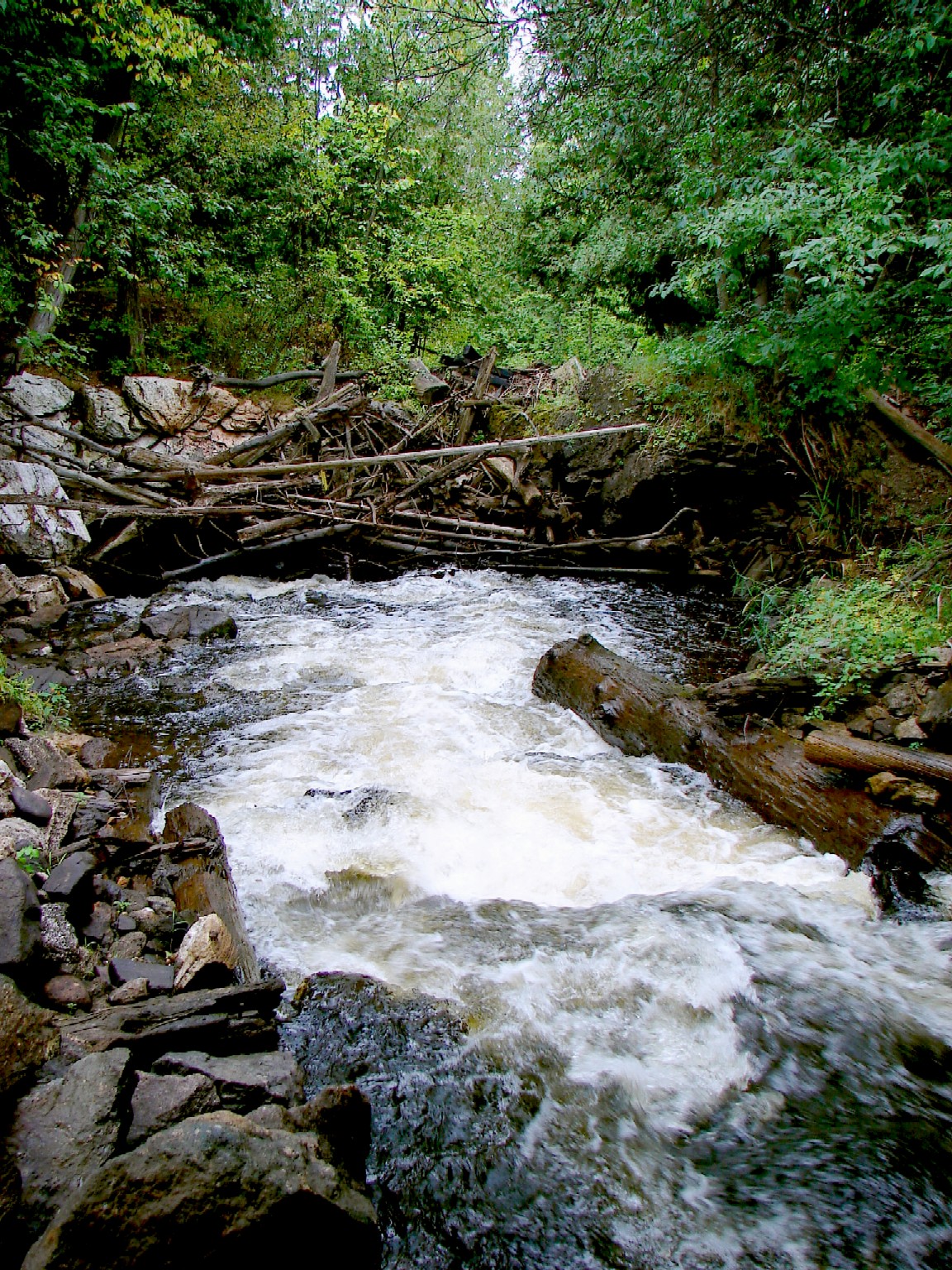Kazabazua, Quebec on:
[Wikipedia]
[Google]
[Amazon]
Kazabazua is a village and municipality in La Vallée-de-la-Gatineau Regional County Municipality, Quebec, Canada. The village is about halfway between Maniwaki and Hull at the intersection of Route 105 and Route 301, just west of the Gatineau River.
The village and municipality are named after the Kazabazua River which passes through it. Like many other First Nations names, Kazabazua has had many spellings in English, such as Kazaluzu, Kasubasua, Cazabasua, Cazibazouis, Cazebalzuac, Cajibajouis. This word comes from the Algonquin word ''kachibadjiwan'', from ''kach'' ("hidden") and ''djiwan'' ("current"), hence it means "underground river". This name is a reflection of the local topography because the Kazabazua River disappears underground and resurfaces a few dozen metres downstream. The river then flows through rapids and passes under a natural stone bridge.
The communities of Kazabazua Station, Aylwin, and Aylwin Station are also located within the municipality.
 The bedrock of the region Kazabazua is composed predominantly of marble dating from the Precambrian Era and represent metamorphic sedimentary rocks from the
The bedrock of the region Kazabazua is composed predominantly of marble dating from the Precambrian Era and represent metamorphic sedimentary rocks from the
Online version
) At the Kazabazua River, marble is calcitic and contains crystals of graphite and grossular garnet. The marble has been chemically and mechanically eroded by water from the river to form a
Official websiteKazabazua page at MRC de La Vallée-de-la-Gatineau website
{{authority control Incorporated places in Outaouais Municipalities in Quebec 1862 establishments in Canada
Geology
Grenville orogeny
The Grenville orogeny was a long-lived Mesoproterozoic mountain-building event associated with the assembly of the supercontinent Rodinia. Its record is a prominent orogenic belt which spans a significant portion of the North American continent, ...
.Centre d'Interprétation en Géologie du Grenville, ''Plan de développement intégré, Sites et circuits du patrimoine naturel de la région de l’Outaouais'', Montebello (Quebec), 2008-02-27Online version
) At the Kazabazua River, marble is calcitic and contains crystals of graphite and grossular garnet. The marble has been chemically and mechanically eroded by water from the river to form a
karst
Karst () is a topography formed from the dissolution of soluble carbonate rocks such as limestone and Dolomite (rock), dolomite. It is characterized by features like poljes above and drainage systems with sinkholes and caves underground. Ther ...
stone bridge. The inclusion of gneiss
Gneiss (pronounced ) is a common and widely distributed type of metamorphic rock. It is formed by high-temperature and high-pressure metamorphic processes acting on formations composed of igneous or sedimentary rocks. This rock is formed under p ...
in the marble illustrates erosion differential.
The Kazabazua Plain is a geomorphological phenomenon unique to Quebec. It is made up of metamorphic rocks which are covered with a network of ancient sand dunes and bogs within which many rare plant species and threatened species have been identified. The topography is the result of water and wind action since the withdrawal of the last glacier. After this withdrawal, the region was covered by the Champlain Sea
The Champlain Sea () was a prehistoric inlet of the Atlantic Ocean into the North American continent, created by the retreating ice sheets during the closure of the last glacial period. The inlet once included lands in what are now the Canadi ...
, which left a layer of marine clay. When the sea level lowered, the area was submerged under a postglacial delta which deposited large volumes of sand.
History
This area is part of the Algonquin First Nation territory and has long been inhabited by that people. Circa 1835, the area began to be settled and the community was originally called Hoganville, in memory of the first pioneers, the Hogan family, who were soon joined by the Gabie, Chamberlain, and Pritchard families. In 1858, the Aylwin Township was formed, followed in 1862 by the township municipality with the same name. These were named after judge and politicianThomas Cushing Aylwin
Thomas Cushing Aylwin (January 5, 1806 – October 14, 1871) was a lawyer, political figure and judge in Lower Canada (now Quebec). He was born in Quebec City and trained as a lawyer, including a period of education at Harvard University. ...
(1806–1871). Also in 1862, the local post office opened, named Kazubazua. As evidenced by Lovell's Gazetteer of 1873, the village itself also began to be popularly known as Kazubazua.
In 1932, the name was changed to Kazabazua and the municipality legally took this name in 1976. It is often shortened to "Kaz" by locals.
Demographics
Private dwellings occupied by usual residents (2021): 484 (total dwellings: 832) Languages: * English as first language: 42.3% * French as first language: 53.4% * English and French as first language: 3.7%See also
*List of anglophone communities in Quebec
This is a list of anglophone communities in the Canadian province of Quebec. Municipalities with a high percentage of English-speakers in Quebec are listed.
The provincial average of Quebecers whose mother tongue is English is 7.6%, with a tot ...
References
External links
Official website
{{authority control Incorporated places in Outaouais Municipalities in Quebec 1862 establishments in Canada